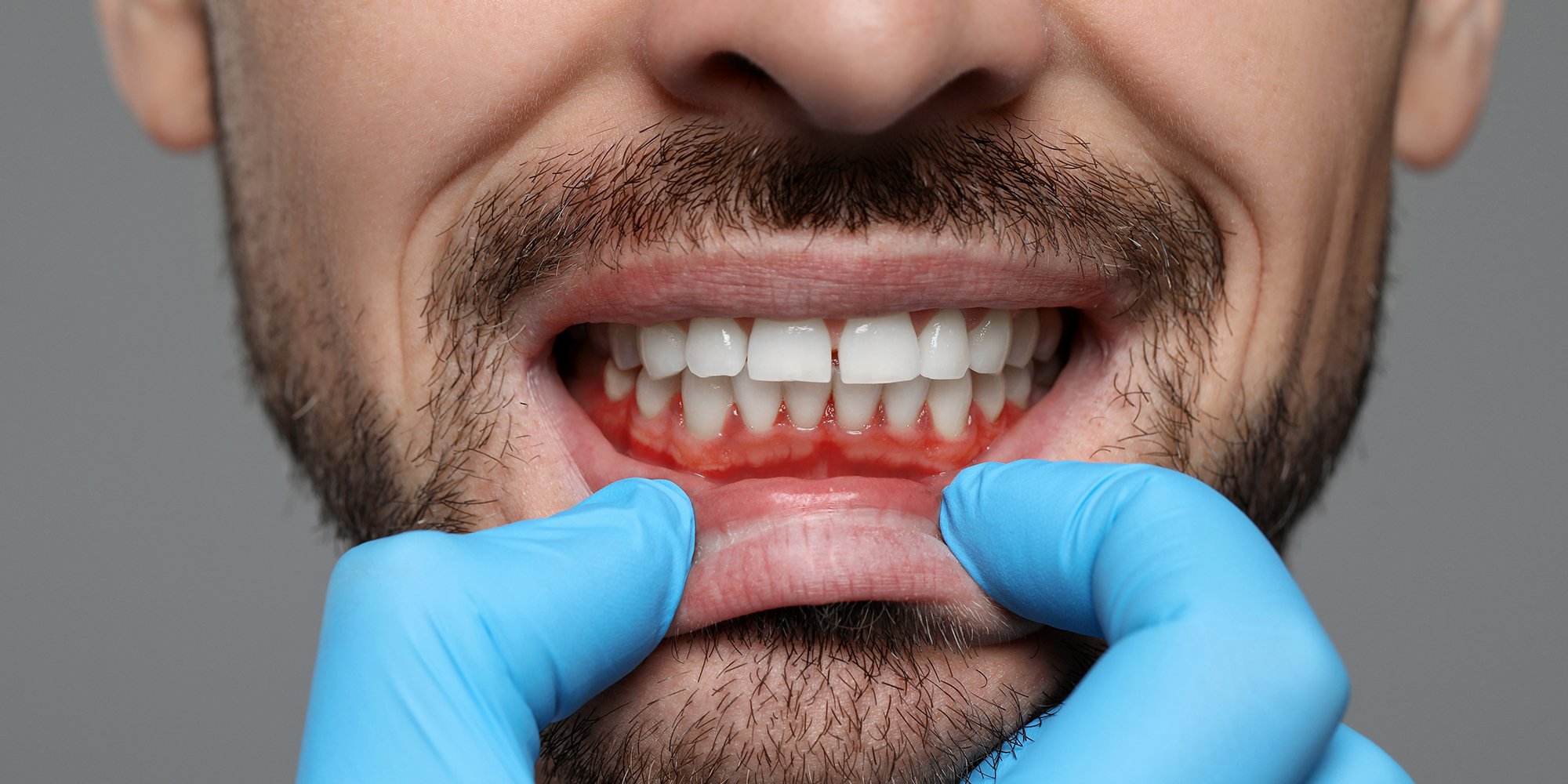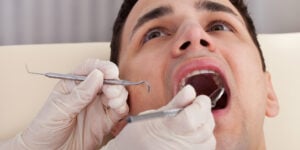| ✅ Reviewed by Dr. Tom McCawley | 🕒 Reading time: three minutes |
Living with diabetes means paying close attention to your whole-body health, and that includes your mouth. Research has shown a strong, two-way connection between periodontal (gum) disease and diabetes. [1]
At the McCawley Center for Laser Periodontics & Implants, we help patients understand and manage this link so they can protect both their oral health and their overall well-being.
Why Diabetes Raises the Risk for Gum Disease
People with diabetes have a higher risk of developing gum disease because elevated blood sugar levels make it easier for bacteria to thrive. Diabetes can also reduce blood flow to the gums and slow the body’s ability to fight infection. This means even small amounts of plaque can cause inflammation, leading to gum disease that progresses faster than in patients without diabetes.
How Gum Disease Impacts Blood Sugar Control
The connection works both ways. Gum disease is an inflammatory condition, and that inflammation can spread beyond the mouth. When harmful bacteria and toxins from periodontal infection enter the bloodstream, they raise the body’s overall inflammatory response.
For patients with diabetes, this makes it harder to control blood sugar and can even contribute to insulin resistance. Treating gum disease helps reduce this systemic inflammation, making diabetes easier to manage.
Common Oral Health Problems in People With Diabetes
Diabetes not only increases the risk of gum disease but also causes other oral health issues, including:
- Dry mouth: Reduced saliva makes it harder to wash away bacteria, increasing the risk of cavities and infections.
- Slower healing: Cuts, sores, or oral surgery may take longer to heal.
- More frequent infections: Fungal infections like thrush are more common in people with diabetes.
- Persistent bad breath: Gum infections can cause chronic odor that brushing and mouthwash will not fix.
Advanced Laser Treatment for Gum Disease
Traditional gum surgery can be painful and involve long recovery times. We use the LANAP® laser protocol to treat gum disease with no cutting or stitches. The laser targets and removes only diseased tissue, kills bacteria deep below the gumline, and stimulates bone regeneration. Most patients return to normal activities within 24 hours.
Because laser therapy reduces infection and inflammation throughout the body, it can play a valuable role in helping patients with diabetes keep their blood sugar levels more stable.
Our Role in Your Health Care Team
Managing diabetes takes a team approach. Your periodontist works with your doctor and endocrinologist. They help reduce infection and swelling. This can make blood sugar easier to control.
We use advanced diagnostics, including live microscopic bacterial analysis and antimicrobial therapy, to target the root causes of gum infection. By treating periodontal disease effectively, we are helping patients not just save their teeth, but also protect their overall health.
Protect Your Smile and Your Health
If you have diabetes or are at risk, caring for your gums is an essential part of protecting your overall health.
At McCawley Center for Laser Periodontics & Implants, we work with you and your medical team to reduce infection, lower inflammation, and make blood sugar easier to manage. Our role goes beyond saving teeth—we are committed to being your partner in long-term health and wellness.
To book an appointment at our periodontal office in Fort Lauderdale, FL, call (954) 807-4829 or visit us at 800 East Broward Blvd #706 Fort Lauderdale, FL.
FAQs
Gum disease increases inflammation in the body, which can raise blood sugar levels and make diabetes harder to control. Treating gum disease can improve blood sugar stability.
Elevated blood sugar levels and reduced immune response make it easier for bacteria to cause gum infections, and those infections often progress faster.
Minimally invasive laser treatments like LANAP® are safe and effective. Unlike traditional surgery, LANAP avoids cutting and stitches, reduces inflammation, and promotes faster healing.
Watch for bleeding gums, gum recession, dry mouth, frequent infections, slow healing sores, or persistent bad breath. Early treatment can prevent these from worsening.
Reducing infection and inflammation in the gums helps lower systemic inflammation, which can make it easier to maintain stable blood sugar levels.











